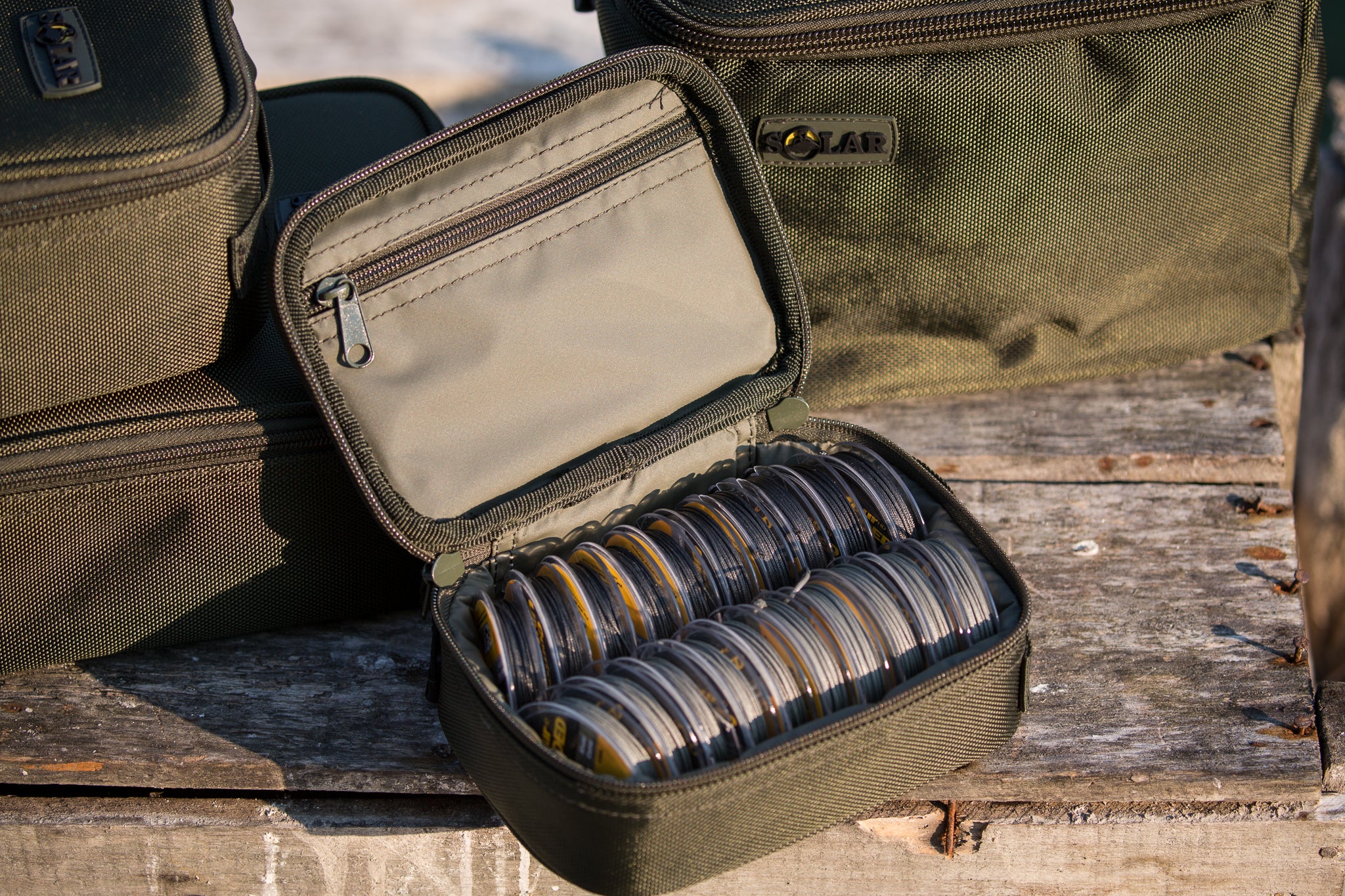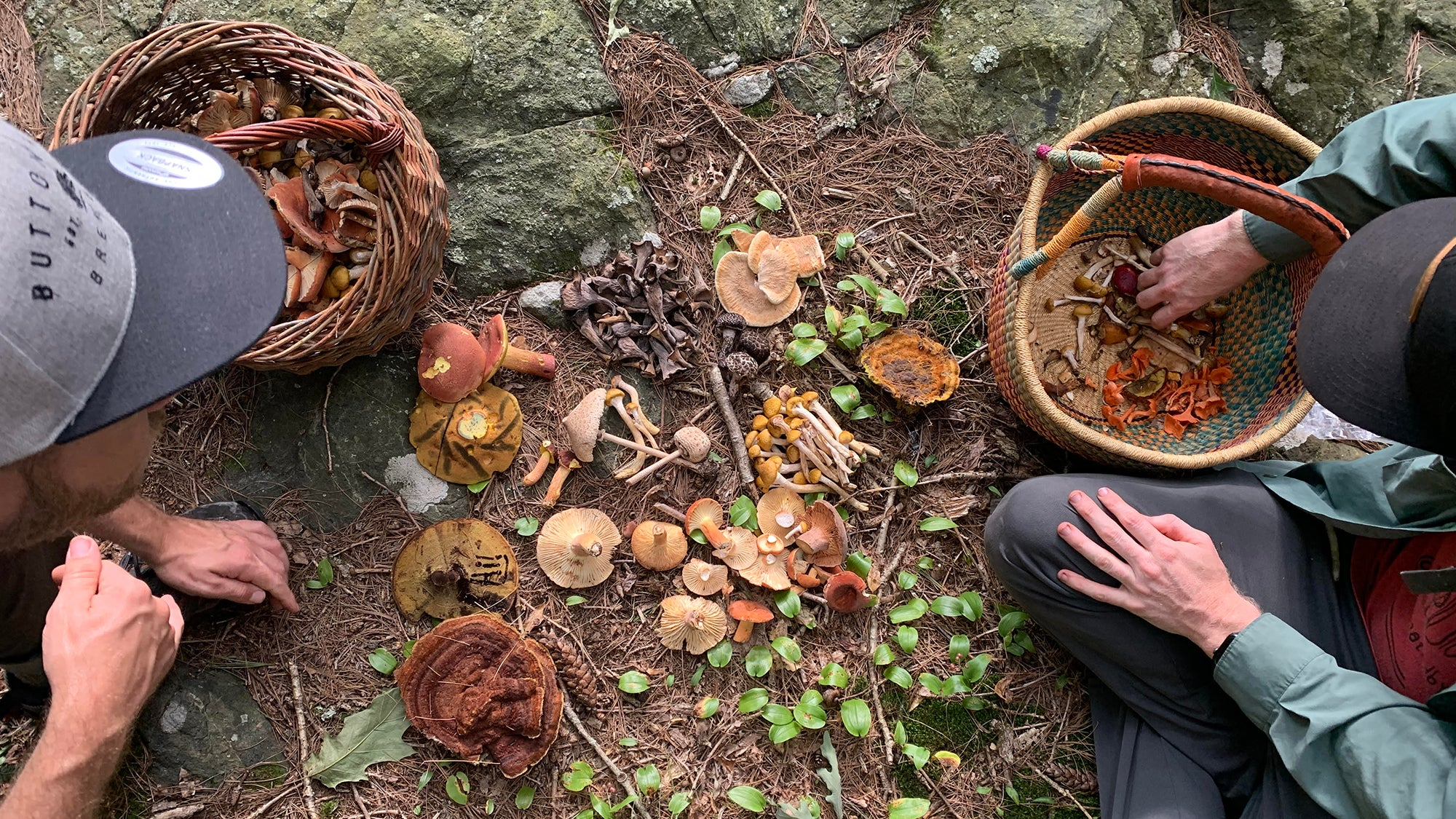mushroom bag ·
mushroom basket ·
Mushroom cultivation ·
mushroom hunting ·
mushroom hunting for beginners ·
mushroom hunting supplies ·
Mushroom identification ·
mushrooms ·
The best mushroom bag suppliers for small and large-scale cultivation
Mushroom cultivation has become a popular hobby for many people around the world. It's easy to see why: not only is it a fun and rewarding activity, but it also allows you to grow your own fresh and healthy mushrooms. One of the key components of mushroom cultivation is the mushroom bag. Mushroom bags are specially designed bags that are used to hold the substrate, or growing medium, that the mushrooms will grow on.
In this article, we will explore what mushroom bags are and why choosing the right supplier is crucial.
In this article, we will explore what mushroom bags are and why choosing the right supplier is crucial.
The best mushroom bag suppliers for small and large-scale cultivation
What are mushroom bags?
Mushroom bags are bags that are designed to hold the substrate that mushrooms grow on. The substrate is a mix of different materials that provide the nutrients and environment that mushrooms need to grow. Common substrates include sawdust, straw, and compost.
Mushroom bags are typically made from a high-quality, durable material that is resistant to tearing and punctures. The bags are designed to be breathable, allowing air to circulate through the substrate and providing the mushrooms with the oxygen they need to grow.
Mushroom bags come in different sizes and shapes, depending on the type of mushroom being grown and the amount of substrate needed. They can range from small bags designed for home cultivation to large bags used in commercial mushroom farms.
Mushroom bags are typically made from a high-quality, durable material that is resistant to tearing and punctures. The bags are designed to be breathable, allowing air to circulate through the substrate and providing the mushrooms with the oxygen they need to grow.
Mushroom bags come in different sizes and shapes, depending on the type of mushroom being grown and the amount of substrate needed. They can range from small bags designed for home cultivation to large bags used in commercial mushroom farms.

Why choosing the right supplier is crucial?
Choosing the right supplier for your mushroom bags is crucial for several reasons. First and foremost, the quality of your mushroom bags will directly impact the quality and yield of your mushrooms. Poor quality bags can lead to contamination, uneven growth, and lower yields.
In addition, choosing the right supplier can also save you time and money in the long run. A reputable supplier will be able to provide you with high-quality bags that are specifically designed for mushroom cultivation. They will also be able to offer advice and support on how to use their products effectively.
When choosing a supplier for your mushroom bags, it's important to do your research. Look for a supplier that has a good reputation in the industry and a track record of providing high-quality products. Read reviews and ask for recommendations from other growers in your area.
Mushroom bags are a crucial component of mushroom cultivation. They provide the substrate that mushrooms grow on and play a significant role in determining the quality and yield of your mushrooms. Choosing the right supplier for your mushroom bags is crucial for success in mushroom cultivation. By doing your research and selecting a reputable supplier, you can ensure that you have access to high-quality bags that will help you grow healthy and delicious mushrooms.
In addition, choosing the right supplier can also save you time and money in the long run. A reputable supplier will be able to provide you with high-quality bags that are specifically designed for mushroom cultivation. They will also be able to offer advice and support on how to use their products effectively.
When choosing a supplier for your mushroom bags, it's important to do your research. Look for a supplier that has a good reputation in the industry and a track record of providing high-quality products. Read reviews and ask for recommendations from other growers in your area.
Mushroom bags are a crucial component of mushroom cultivation. They provide the substrate that mushrooms grow on and play a significant role in determining the quality and yield of your mushrooms. Choosing the right supplier for your mushroom bags is crucial for success in mushroom cultivation. By doing your research and selecting a reputable supplier, you can ensure that you have access to high-quality bags that will help you grow healthy and delicious mushrooms.
Factors to consider when choosing mushroom bag suppliers
When it comes to mushroom cultivation, choosing the right supplier for your mushroom bags is crucial. The quality of your bags will directly impact the quality and yield of your mushrooms, so it's important to choose a supplier that can provide you with high-quality products. Here are some factors to consider when choosing mushroom bag suppliers:
Quality of bags
The quality of your mushroom bags is the most important factor to consider when choosing a supplier. Look for suppliers that use high-quality materials that are resistant to tearing and punctures. The bags should also be breathable to allow air to circulate through the substrate and provide the mushrooms with the oxygen they need to grow. Make sure to ask the supplier about the materials they use and the manufacturing process they follow to ensure that their bags are of the highest quality.
Price
Price is also an important factor to consider when choosing a supplier. While you want to find a supplier that offers high-quality bags, you also want to make sure that their prices are reasonable and within your budget. Compare prices from different suppliers to find the best deal.
Minimum order requirements
Some mushroom bag suppliers may have minimum order requirements that you need to meet before you can place an order. Make sure to ask about any minimum order requirements before placing an order with a supplier. If you're a small-scale grower, look for suppliers that offer smaller minimum order requirements or allow you to purchase bags in smaller quantities.
Shipping and delivery options
Make sure to ask about the shipping and delivery options offered by the supplier. Some suppliers may offer free shipping for orders above a certain amount, while others may charge a flat rate or vary their rates based on the size of the order. Look for suppliers that offer fast and reliable shipping options, especially if you're ordering perishable items like mushroom bags.
Customer service
Good customer service is important when choosing a mushroom bag supplier. Look for suppliers that are responsive to your inquiries and provide helpful and informative answers. Choose a supplier that is willing to work with you to resolve any issues or concerns that may arise.
Reviews and reputation
Finally, read reviews and check the reputation of the supplier before placing an order. Look for suppliers with positive reviews from other growers in the industry. You can also ask for recommendations from other growers in your area or on mushroom cultivation forums and groups.
By considering these factors, you can find a reliable mushroom bag supplier that can provide you with high-quality products, good customer service, and affordable prices.
By considering these factors, you can find a reliable mushroom bag supplier that can provide you with high-quality products, good customer service, and affordable prices.
How to evaluate mushroom bag quality?
Mushroom bag quality is crucial for successful mushroom cultivation. Here are some tips on how to evaluate mushroom bag quality:
Types of materials used in mushroom bags
The type of material used in mushroom bags is an important factor in determining their quality. High-quality mushroom bags are typically made from polypropylene or polyethylene materials, which are durable and resistant to punctures and tears. Look for bags that are made from these materials, as they are more likely to hold up during the cultivation process.
Common bag defects and how to avoid them
Inspecting the bags for defects is an important step in evaluating mushroom bag quality. Common bag defects include holes, tears, and weak seams. These defects can lead to contamination and lower mushroom yields. To avoid these defects, make sure to purchase bags from a reputable supplier and inspect the bags thoroughly before use. Look for bags that have strong seams and are free of tears or holes.
Importance of bag sterilization and sanitation
Sterilization and sanitation are important factors in maintaining the quality of your mushroom bags. The bags must be sterilized before use to prevent contamination from bacteria or other harmful microorganisms. Make sure to follow proper sterilization procedures, including using a pressure cooker or autoclave to sterilize the bags.
In addition to sterilization, it's important to maintain good sanitation practices throughout the cultivation process. Keep the cultivation area clean and free of debris, and make sure to handle the bags with clean hands and tools to prevent contamination.
By considering these factors, you can evaluate the quality of your mushroom bags and take the necessary steps to ensure successful mushroom cultivation.
In addition to sterilization, it's important to maintain good sanitation practices throughout the cultivation process. Keep the cultivation area clean and free of debris, and make sure to handle the bags with clean hands and tools to prevent contamination.
By considering these factors, you can evaluate the quality of your mushroom bags and take the necessary steps to ensure successful mushroom cultivation.
Tips for ordering mushroom bags
Ordering mushroom bags is an important aspect of mushroom cultivation. Here are some tips to help you with the ordering process:
Calculating the quantity needed for your operation
Before ordering mushroom bags, it's important to calculate the quantity needed for your operation. Consider the size of your operation and the amount of mushrooms you plan to produce. It's important to order enough bags to meet your production needs while avoiding excess waste. Take into account any potential fluctuations in production volume as well.
Bulk ordering strategies
Bulk ordering can be a cost-effective strategy for purchasing mushroom bags. Many suppliers offer discounts for bulk orders, which can help you save money in the long run. Consider placing a larger order upfront to take advantage of these discounts. However, it's important to make sure you have the space to store the bags and the resources to use them before ordering in bulk.
Order lead times and expected delivery dates
When ordering mushroom bags, it's important to consider order lead times and expected delivery dates. Some suppliers may have longer lead times than others, which can impact your production timeline. Make sure to ask about lead times and delivery dates before placing your order, and plan accordingly to avoid any delays in your cultivation process.
Payment methods
When ordering mushroom bags, it's important to consider the available payment methods. Some suppliers may require upfront payment, while others may offer payment terms. Make sure to clarify payment terms with the supplier before placing your order to avoid any misunderstandings or delays in delivery.
By considering these tips, you can make the ordering process for mushroom bags smoother and more efficient, helping to ensure successful mushroom cultivation.
By considering these tips, you can make the ordering process for mushroom bags smoother and more efficient, helping to ensure successful mushroom cultivation.

Common problems with mushroom bags and how to avoid them
Mushroom bags can sometimes encounter problems during the cultivation process. Here are some common issues and tips on how to avoid them:
Mold growth
Mold growth is one of the most common problems with mushroom bags. Mold can quickly spread and cause contamination of the bags and the mushrooms. To prevent mold growth, it's important to properly sterilize the bags before use. Make sure to follow the recommended sterilization procedures for the bags and the cultivation environment. It's also important to monitor humidity levels and maintain proper ventilation to prevent the buildup of moisture, which can encourage mold growth.
Bag ruptures
Bag ruptures can occur due to a variety of reasons, such as overfilling or rough handling during transport or storage. To avoid bag ruptures, make sure to use bags that are appropriate for your cultivation method and volume. It's also important to handle the bags with care during transport and storage, and avoid stacking heavy objects on top of them. Consider using reinforced bags or adding additional support during transport to prevent ruptures.
Contamination
Contamination is another common issue with mushroom bags. This can occur due to the presence of bacteria, viruses, or other pathogens in the cultivation environment. To avoid contamination, it's important to maintain a clean and sterile environment. Make sure to properly sanitize all equipment, surfaces, and tools used in the cultivation process. It's also important to use high-quality substrate and spawn to ensure that the bags are not contaminated before use.
Shelf life issues
Shelf life issues can occur when mushroom bags are stored for too long before use. Over time, the bags can become contaminated or lose their viability. To avoid shelf life issues, it's important to store the bags in a cool and dry environment. Make sure to use bags before their expiration date and avoid storing them for extended periods of time.
By taking the necessary precautions and implementing these tips, you can avoid common problems with mushroom bags and ensure successful mushroom cultivation.
By taking the necessary precautions and implementing these tips, you can avoid common problems with mushroom bags and ensure successful mushroom cultivation.
Alternatives to mushroom bags
While mushroom bags are a popular choice for mushroom cultivation, there are other alternatives available as well. Here are a few options:
Substrate jars
Substrate jars are a popular alternative to mushroom bags for growing small batches of mushrooms. They are typically made of glass or plastic and come in various sizes. Substrate jars are pre-filled with sterilized substrate and inoculated with mushroom spores or spawn. They can be used for a variety of mushroom species, including oyster, shiitake, and more. Substrate jars are easy to use and require minimal equipment, making them a great option for beginners.
Spawn bags
Spawn bags are similar to mushroom bags but are designed specifically for the inoculation and growth of mushroom spawn. They are typically made of polypropylene and come in various sizes. Spawn bags are pre-sterilized and can be used for a variety of mushroom species. They are a convenient option for larger scale cultivation and can be easily transported and stored.
Sterilized grain bags
Sterilized grain bags are another alternative to mushroom bags for growing mushroom spawn. They are pre-filled with sterilized grains such as rye or wheat and inoculated with mushroom spores or spawn. Sterilized grain bags can be used for a variety of mushroom species and are a convenient option for larger scale cultivation. They are typically sold in bulk and can be easily transported and stored.
In conclusion, while mushroom bags are a popular choice for mushroom cultivation, there are other alternatives available that may better suit your needs or preferences. Consider your options and choose the method that works best for you.
In conclusion, while mushroom bags are a popular choice for mushroom cultivation, there are other alternatives available that may better suit your needs or preferences. Consider your options and choose the method that works best for you.
How to store and maintain mushroom bags?
Proper storage and maintenance of mushroom bags is important for the success of your mushroom cultivation operation. Here are some tips for storing and maintaining your mushroom bags:
Optimal storage conditions
Mushroom bags should be stored in a cool, dark place with a temperature between 50-70°F and humidity between 85-95%. Storing bags in a location with too much moisture or heat can cause mold growth or bag rupture. It's important to keep bags away from direct sunlight and to store them in a way that allows for proper air circulation.
Regular maintenance and inspection
Regular maintenance and inspection of mushroom bags is important for preventing contamination and ensuring the bags are healthy. It's recommended to inspect bags at least once a week for signs of mold, discoloration, or other abnormalities. If any bags appear contaminated, they should be removed immediately to prevent the spread of contamination to other bags.
Disposal methods
If you need to dispose of mushroom bags, it's important to do so properly to prevent the spread of contamination or disease. Bags that are contaminated or have been used for mushroom cultivation should be disposed of in a way that prevents the spread of spores or other pathogens. One option is to seal the bags in a plastic bag and dispose of them in the trash. Another option is to sterilize the bags using an autoclave or pressure cooker before disposing of them.
In conclusion, proper storage and maintenance of mushroom bags is important for successful mushroom cultivation. By following these tips, you can ensure your bags are healthy and free from contamination, and properly dispose of bags when necessary.
In conclusion, proper storage and maintenance of mushroom bags is important for successful mushroom cultivation. By following these tips, you can ensure your bags are healthy and free from contamination, and properly dispose of bags when necessary.

Sustainability and mushroom bag production
As consumers become increasingly concerned with sustainability, it's important to consider the environmental impact of mushroom bag production. Here are some factors to consider when evaluating the sustainability of mushroom bag production:
Eco-friendly materials and production practices
Some mushroom bag suppliers use eco-friendly materials, such as recycled or biodegradable plastics, to reduce the environmental impact of their products. Additionally, some suppliers use sustainable production practices, such as using renewable energy sources or reducing water usage during production.
Recycling and repurposing bags
Many mushroom growers choose to recycle or repurpose their used bags to reduce waste. Bags can be repurposed as planters, compost bins, or other garden tools. Some suppliers also offer recycling programs to ensure their bags are disposed of in an eco-friendly manner.
Ethical sourcing and labor practices
It's important to consider the ethical sourcing and labor practices of mushroom bag suppliers. Some suppliers may use cheap labor or unethical sourcing practices, which can harm workers and the environment. Choosing suppliers that prioritize fair labor practices and sustainable sourcing can help ensure that your mushroom cultivation operation aligns with your values.
In conclusion, sustainability is an important factor to consider when evaluating mushroom bag production. By choosing eco-friendly materials and production practices, recycling and repurposing bags, and prioritizing ethical sourcing and labor practices, you can ensure that your mushroom cultivation operation is both successful and environmentally responsible.
In conclusion, sustainability is an important factor to consider when evaluating mushroom bag production. By choosing eco-friendly materials and production practices, recycling and repurposing bags, and prioritizing ethical sourcing and labor practices, you can ensure that your mushroom cultivation operation is both successful and environmentally responsible.
Frequently Asked Questions
How long do mushroom bags last?
The lifespan of mushroom bags can vary depending on the quality of the bag and the conditions in which they are stored. Typically, mushroom bags have a shelf life of around 6-12 months. It's important to inspect bags regularly for signs of contamination or wear and tear, and to replace bags as needed.
Can I reuse mushroom bags?
While it is possible to reuse mushroom bags, it is not recommended. Reusing bags can increase the risk of contamination and reduce the yield of your mushroom crop. It's best to use new bags for each cultivation cycle to ensure the best possible results.
What is the difference between filter patch bags and self-healing injection ports?
Filter patch bags have a breathable filter patch that allows for gas exchange during the cultivation process, while self-healing injection ports have a small self-sealing injection site that allows for the injection of spawn or other materials. Both types of bags have their own benefits and drawbacks, and the choice between them will depend on the specific needs of your mushroom cultivation operation.
Can I grow any type of mushroom in bags?
Many different types of mushrooms can be grown in bags, including oyster, shiitake, and button mushrooms. However, some species may require specific environmental conditions or substrates to grow properly. It's important to research the specific requirements of the mushroom species you wish to grow before selecting a bag.
How should I dispose of used mushroom bags?
Used mushroom bags should be disposed of properly to reduce waste and prevent contamination. Bags can be composted or recycled if they are made from biodegradable or recyclable materials. If bags cannot be composted or recycled, they should be disposed of in a landfill. It's important to follow local waste disposal regulations when disposing of used mushroom bags.
Conclusion
Mushroom bags are an essential component in the cultivation of mushrooms, providing a sterile environment for the growth of the mycelium. Choosing the right supplier is crucial, and there are several factors to consider when making a selection, including quality, price, shipping options, and customer service. It is also important to evaluate the quality of the bags to ensure they are free of defects, properly sterilized, and made from high-quality materials.
When ordering mushroom bags, it is essential to calculate the quantity needed, develop a bulk ordering strategy, and consider lead times and expected delivery dates. Additionally, payment methods should be reviewed to ensure they align with your operation's financial goals.
To avoid common problems with mushroom bags, growers should be aware of mold growth, bag ruptures, contamination, and shelf life issues. It is also important to be aware of alternatives to mushroom bags, such as substrate jars, spawn bags, and sterilized grain bags.
To maintain and store mushroom bags, optimal storage conditions should be maintained, and regular maintenance and inspection should be conducted to prevent issues from arising. Disposal methods should also be considered to ensure that the bags are handled in an environmentally friendly manner.
Sustainability in mushroom bag production is becoming increasingly important, and growers should consider eco-friendly materials and production practices, recycling and repurposing bags, and ethical sourcing and labor practices.
In conclusion, mushroom bags are an essential component of mushroom cultivation. By choosing the right supplier, evaluating bag quality, developing a bulk ordering strategy, being aware of alternatives, and maintaining the bags, growers can ensure a successful mushroom cultivation operation.























